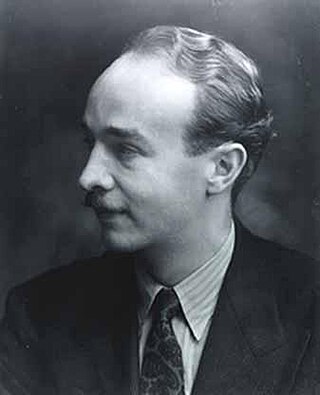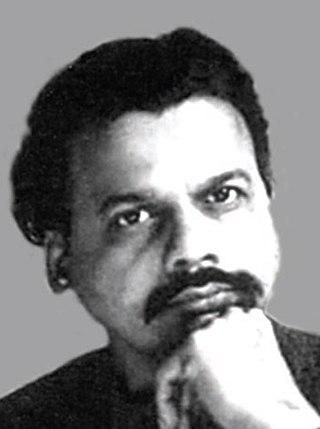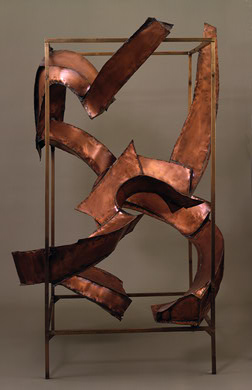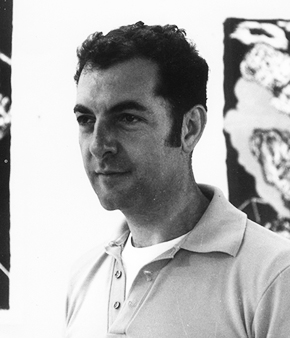Peter Golfinopoulos | |
|---|---|
| Nationality | American |
| Education | Columbia University Art Students League |
| Known for | Painting |
Peter Golfinopoulos is an American artist. His paintings are marked by a variety of highly individualistic modes.
Peter Golfinopoulos | |
|---|---|
| Nationality | American |
| Education | Columbia University Art Students League |
| Known for | Painting |
Peter Golfinopoulos is an American artist. His paintings are marked by a variety of highly individualistic modes.
Served for three years in the U.S. Air Force.
Art Students League of New York, 1950–1951. Studied with Edwin Dickinson and George Grosz.
Columbia University, BFA (1956) and MFA (1958). Golfinopoulos’s main interests were philosophy and art history. He pursued graduate work in philosophy with Robert Denoon Cumming and Albert Hofstadter and studied extensively with art historian Meyer Schapiro. After leaving Columbia, Golfinopoulos remained in contact with Schapiro, and their conversations were influential to his development.
After earning his MFA, in 1958, Golfinopoulos had his first one-man show at Collette Roberts’ Grand Central Moderns Gallery, [1] [ failed verification ] and began teaching part-time at Columbia’s School of Fine Arts. Offered tenure in 1968, feeling that the increase in hours and responsibility would interfere with painting, he decided to leave. Later, he accepted an offer from Stuart Klonis, then head of the Art Students League, to teach one afternoon per week. He maintains this commitment to the present day, seeing it as an ethical imperative.
In 1963, Golfinopoulos met Charles Egan of the Charles Egan Gallery, who became his dealer and his friend. In Egan he found someone whose connection to history, and whose understanding and respect for art, made him an ideal guide for a young artist. Through Egan he met art historian H. H. Arnason and art critic Harris Rosenstein, whose aesthetic convictions and ongoing conversations provided additional grounding and moral support. His friendship with Egan continued after the gallery closed in 1972.
Married to Anna Urban noted Yoga instructor.
The early paintings, 1958 to 1964, are intimate Cartesian dreams. From 1964 to 1971, involvement with Joycean myth brought imaginative, outgoing, precisely measured, and strikingly large abstract narrative constructions. Still working in the non-representational vocabulary of abstraction, there was a shift in the early 1970s to loose, open, emotionally charged dramatic confrontations.
The years 1985 to 1995 produced “Comic Allegories,” a group of non-naturalistic narrative paintings provoked by changing situations in the world. They represent the artist’s only excursion into figuration. “Charms,” completed in 2005, are paintings of sensual order. They mark a break with narrative as a generative impulse and a return to a smaller, more intimate format.
The most recent works are colorful speculations in and on idleness.
Golfinopoulos’s works are in numerous private and corporate collections.

Kenneth Noland was an American painter. He was one of the best-known American color field painters, although in the 1950s he was thought of as an abstract expressionist and in the early 1960s he was thought of as a minimalist painter. Noland helped establish the Washington Color School movement. In 1977, he was honored by a major retrospective at the Solomon R. Guggenheim Museum in New York that then traveled to the Hirshhorn Museum and Sculpture Garden in Washington, D.C. and Ohio's Toledo Museum of Art in 1978. In 2006, Noland's Stripe Paintings were exhibited at the Tate in London.

Meyer Schapiro was a Lithuanian-born American art historian known for developing new art historical methodologies that incorporated an interdisciplinary approach to the study of works of art. An expert on early Christian, Medieval, and Modern art, Schapiro explored art historical periods and movements with a keen eye towards the social, political, and the material construction of art works.

Adolph Dietrich Friedrich Reinhardt was an abstract painter active in New York for more than three decades. He was a member of the American Abstract Artists (AAA) and part of the movement centered on the Betty Parsons Gallery that became known as abstract expressionism. He was also a member of The Club, the meeting place for the New York School abstract expressionist artists during the 1940s and 1950s. He wrote and lectured extensively on art and was a major influence on conceptual art, minimal art and monochrome painting. Most famous for his "black" or "ultimate" paintings, he claimed to be painting the "last paintings" that anyone can paint. He believed in a philosophy of art he called Art-as-Art and used his writing and satirical cartoons to advocate for abstract art and against what he described as "the disreputable practices of artists-as-artists".
Robert Motherwell was an American abstract expressionist painter, printmaker, and editor of The Dada Painters and Poets: an Anthology. He was one of the youngest of the New York School, which also included Willem de Kooning, Jackson Pollock, and Mark Rothko.

Robert Henry De Niro, better known as Robert De Niro Sr., was an American abstract expressionist painter and the father of actor Robert De Niro.
Paul Jenkins was an American abstract expressionist painter.

Robert Mangold is an American minimalist artist. He is also father of film director and screenwriter James Mangold.

Alma Woodsey Thomas was an African-American artist and teacher who lived and worked in Washington, D.C., and is now recognized as a major American painter of the 20th century. Thomas is best known for the "exuberant", colorful, abstract paintings that she created after her retirement from a 35-year career teaching art at Washington's Shaw Junior High School.
The Bay Area Figurative Movement was a mid-20th Century art movement made up of a group of artists in the San Francisco Bay Area who abandoned working in the prevailing style of Abstract Expressionism in favor of a return to figuration in painting during the 1950s and onward into the 1960s. Spanning two decades, this art movement is often broken down into three groups, or generations: the First Generation, the Bridge Generation, and the Second Generation.

Robert Engman was an American sculptor with works in the permanent collection of the Hirshhorn Museum, MOMA, the Whitney Museum of American Art, numerous college museums, and private collections.

John Koch, , was an American painter and teacher, and an important figure in 20th century Realism. He is best known for his light-filled paintings of urban interiors, often featuring classical allusions, many set in his own Manhattan apartment.

Mohan Samant was an early Indian modernist painter and member of the Progressive Artists Group. He was also a lifelong player of the sarangi, an Indian bowed string instrument.
Elias Goldberg was an American painter.

Herbert Ferber was an American Abstract Expressionist, sculptor and painter, and a "driving force of the New York School."

Kenneth Hayes Miller was an American painter, printmaker, and teacher.

Joseph Hirsch (1910–1981) was an American painter, illustrator, muralist and teacher. Social commentary was the backbone of Hirsch's art, especially works depicting civic corruption and racial injustice.

Morton Livingston Schamberg was an American modernist painter and photographer. He was one of the first American artists to explore the aesthetic qualities of industrial subjects. Schamberg is considered a pioneer of the Precisionism art movement, and one of the first American adopters of Cubist style.
Jane Freilicher was an American representational painter of urban and country scenes from her homes in lower Manhattan and Water Mill, Long Island. She was a member of the informal New York School beginning in the 1950s, and a muse to several of its poets and writers.

Seymour Rosofsky was an American artist, who has been described as one of the key figures in twentieth-century Chicago art. He emerged in the late 1940s at the School of the Art Institute of Chicago, one of several G.I. Bill veterans, including Leon Golub, Cosmo Campoli and H. C. Westermann, who would join Don Baum, Dominick Di Meo, June Leaf, and Nancy Spero to form the influential movement later dubbed the "Monster Roster" by critic Franz Schulze, which was a precursor to the more well-known Chicago Imagists. Like others in the group, Rosofsky was drawn to the unsettling, macabre side of Surrealism, initially creating gestural, expressionist renderings of grotesque, existentially angst-ridden figures in isolated or uncomfortable situations, that gave way in the 1960s to more fantastical, observational paintings that examined power, politics and domestic relationships in an unflinching way.

Robert Birmelin is an American figurative painter, printmaker and draughtsman. In other contexts he is also known as August Robert or A. Robert Birmelin. He was born in Newark, New Jersey and currently resides in Leonia, New Jersey.